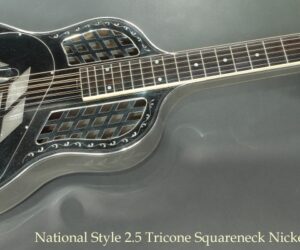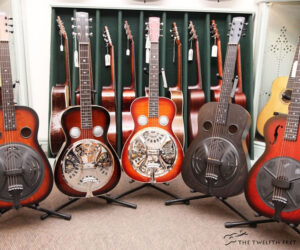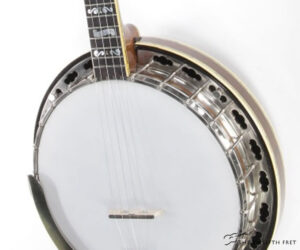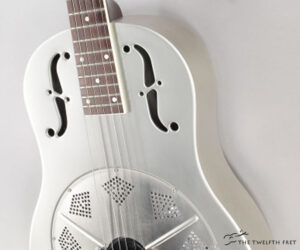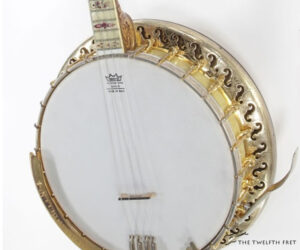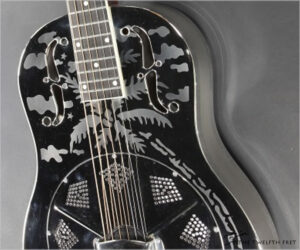The National Style 2.5 Tricone Squareneck, or ‘Style Two and a Half’ is very close to the Style 2, with just a rose engraving on coverplate’s hand rest making the difference. Introduced in 1927, the Style 2 was the top of the National line, with a brass body with nickel plating. The wooden components, such as the headstock, are Mahogany, except for the Ebony fingerboard. National Resophonic guitars were a radical, major innovation in musical instrument design.
Resonator
New Beard resonator guitars in squareneck and roundneck models, including the new Radio Standard line have arrived! The Radio-E comes standard with Beard #14 spider and hand spun Beard Legend Cone™, a black tailpiece and black Radio™ coverplate. All Radio Standards come standard with Gotoh tuners. The Radio-RFB comes standard with a hand spun Beard biscuit cone and a black tailpiece and black sieve coverplate.
The Deering GDL – the Greg Deering Limited – Walnut 5-string banjo sits near the top of the line for production models. It is a spectacular illustration of the state of the Banjo art. For materials, the resonator features a Burl Walnut veneer, a Maple rim and Walnut neck with bound Ebony fingerboard.
Based on the classic 1930’s ‘Duolian’ style design, this National Vintage Steel is a single-cone, 12-fret Resophonic guitar with a rubbed nickel finish. The first instruments built by the National String Instrument Corporation were the famous Tri-Cone models and were invented to address the need for more volume in a time before electric amplification.
This instrument has sold
MORE →The fantastic piece seen here is a Bacon & Day Montana Silver Bell No.4 Tenor banjo, built during October 1927 in Groton, Connecticut. This model was available in both the longer Plectrum and shorter Tenor scale lengths.
This instrument has sold
MORE →The National Style O 12-fret Resophonic guitar first appeared in 1930 as the first single-cone Resophonic model from the National String Instrument Corporation. In the original 1927 design by George Beauchamp and John Dopyera, three cones were used in a ‘tricone’ formation.
This instrument has sold
MORE →